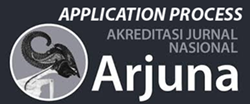Effectiveness of Online and Offline Educational Media in Increasing Pregnant Women's Knowledge about the Warning Signs of Preeclampsia in Rural Aceh Besar Regency
DOI:
https://doi.org/10.59653/jhsmt.v2i03.1150Keywords:
Preeclampsia, Pregnant women, Educational media, Online education, Offline education, Knowledge improvement, Rural healthAbstract
This study explores the effectiveness of online and offline educational media in enhancing pregnant women's knowledge about the warning signs of preeclampsia in rural Aceh Besar District. Preeclampsia is a serious pregnancy complication that can lead to severe health risks for both mothers and infants, making education on its warning signs essential. A quasi-experimental design was utilized, involving three groups of pregnant women: one group received education through an animated video, the second group was provided with an online booklet, and the third group received an offline booklet. The study included pre-test and post-test assessments to evaluate knowledge improvement, followed by statistical analysis using the Wilcoxon signed-rank test and the Kruskal-Wallis test to determine the effectiveness of each intervention. The results revealed significant increases in average post-test scores across all groups, with a p-value of 0.000 indicating strong statistical significance. The video group demonstrated the highest improvement, with pre-test scores averaging 72.10 and post-test scores rising to 86.30, resulting in an increase of 14.20. The online booklet group showed a substantial increase as well, with pre-test scores of 68.70 rising to 81.00, reflecting an increase of 11.90. Similarly, the offline booklet group experienced an increase from 72.60 to 81.20, marking an increase of 8.60. These findings underscore the effectiveness of all intervention methods in improving knowledge about preeclampsia among pregnant women. Notably, the animated video emerged as the most effective educational tool, demonstrating its potential to engage and inform effectively.
Downloads
References
Bellamy, L., Casas, J. P., Hingorani, A. D., & Williams, D. J. (2007). Pre-eclampsia and risk of cardiovascular disease and cancer in later life: systematic review and meta-analysis. BMJ, 335(7627), 974. https://doi.org/10.1136/bmj.39335.385301.be
Bharti, R. K. (2023). Contribution of Medical Education through Role Playing in Community Health Promotion: A Review. Iranian Journal of Public Health, 52(6), 1121. https://doi.org/10.18502/IJPH.V52I6.12954
Chang, K. J., Seow, K. M., & Chen, K. H. (2023a). Preeclampsia: Recent Advances in Predicting, Preventing, and Managing the Maternal and Fetal Life-Threatening Condition. International Journal of Environmental Research and Public Health, 20(4), 2994. https://doi.org/10.3390/IJERPH20042994
Chang, K. J., Seow, K. M., & Chen, K. H. (2023b). Preeclampsia: Recent Advances in Predicting, Preventing, and Managing the Maternal and Fetal Life-Threatening Condition. International Journal of Environmental Research and Public Health, 20(4), 2994. https://doi.org/10.3390/IJERPH20042994
Darlington, E. J., Violon, N., & Jourdan, D. (2018). Implementation of health promotion programmes in schools: An approach to understand the influence of contextual factors on the process? BMC Public Health, 18(1), 1–17. https://doi.org/10.1186/S12889-017-5011-3/TABLES/4
Djuanda, J. K., Akbar, M. A., Sulistyono, A., Aditya, R., & Ernawati. (2023). Impact of preeclampsia on the outcome of COVID-19 infection. Bali Medical Journal, 12(2), 1342–1346. https://doi.org/10.15562/BMJ.V12I2.4341
Ghahramani, A., de Courten, M., & Prokofieva, M. (2022). “The potential of social media in health promotion beyond creating awareness: an integrative review.” BMC Public Health, 22(1). https://doi.org/10.1186/S12889-022-14885-0
Jane, M., Hagger, M., Foster, J., Ho, S., & Pal, S. (2018). Social media for health promotion and weight management: A critical debate. BMC Public Health, 18(1). https://doi.org/10.1186/S12889-018-5837-3
Kókai, L. L., van der Bijl, M. F., Hagger, M. S., Ó Ceallaigh, D. T., Rohde, K. I. M., van Kippersluis, H., Burdorf, A., Duvekot, J. J., van Lennep, J. E. R., & Wijtzes, A. I. (2022). Needs and preferences of women with prior severe preeclampsia regarding app-based cardiovascular health promotion. BMC Women’s Health, 22(1), 1–9. https://doi.org/10.1186/S12905-022-02004-5/TABLES/3
Rana, S., Lemoine, E., Granger, J., & Karumanchi, S. A. (2019). Preeclampsia: Pathophysiology, Challenges, and Perspectives. Circulation Research, 124(7), 1094–1112. https://doi.org/10.1161/CIRCRESAHA.118.313276/ASSET/093CF6BB-9496-4C85-9583-5C41E1DFFFEA/ASSETS/IMAGES/LARGE/1094FIG03.JPG
Roy, R., Malloy, J., Roy, R., & Malloy, J. (2023). Evolving Role of Social Media in Health Promotion. Health Promotion - Principles and Approaches. https://doi.org/10.5772/INTECHOPEN.111967
Stellefson, M., Paige, S. R., Chaney, B. H., & Chaney, J. D. (2020a). Evolving Role of Social Media in Health Promotion: Updated Responsibilities for Health Education Specialists. International Journal of Environmental Research and Public Health, 17(4). https://doi.org/10.3390/IJERPH17041153
Stellefson, M., Paige, S. R., Chaney, B. H., & Chaney, J. D. (2020b). Social media and health promotion. International Journal of Environmental Research and Public Health, 17(9). https://doi.org/10.3390/IJERPH17093323
Tabassum, S., AlSada, A., Bahzad, N., Sulaibeekh, N., Qureshi, A., & Dayoub, N. (2022). Preeclampsia and Its Maternal and Perinatal Outcomes in Pregnant Women Managed in Bahrain’s Tertiary Care Hospital. Cureus, 14(5). https://doi.org/10.7759/CUREUS.24637
Downloads
Published
How to Cite
Issue
Section
License
Copyright (c) 2024 Yuni Sari, Nurbaiti

This work is licensed under a Creative Commons Attribution-ShareAlike 4.0 International License.
Authors who publish with this journal agree to the following terms:
- Authors retain copyright and grant the journal right of first publication with the work simultaneously licensed under a Creative Commons Attribution-ShareAlike that allows others to share the work with an acknowledgement of the work's authorship and initial publication in this journal.
- Authors are able to enter into separate, additional contractual arrangements for the non-exclusive distribution of the journal's published version of the work (e.g., post it to an institutional repository or publish it in a book), with an acknowledgement of its initial publication in this journal.
- Authors are permitted and encouraged to post their work online (e.g., in institutional repositories or on their website) prior to and during the submission process, as it can lead to productive exchanges, as well as earlier and greater citation of published work (See The Effect of Open Access).
























